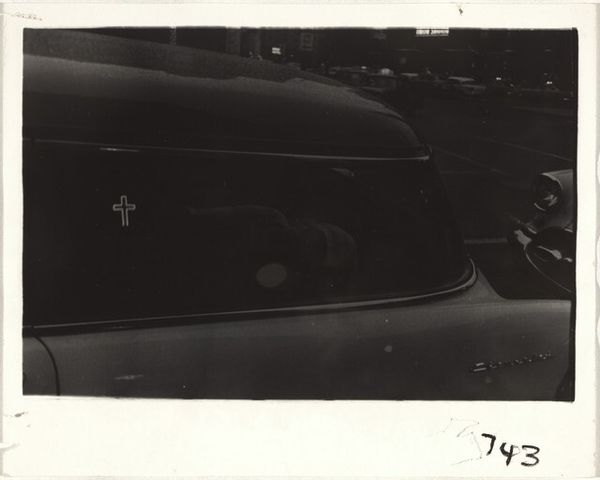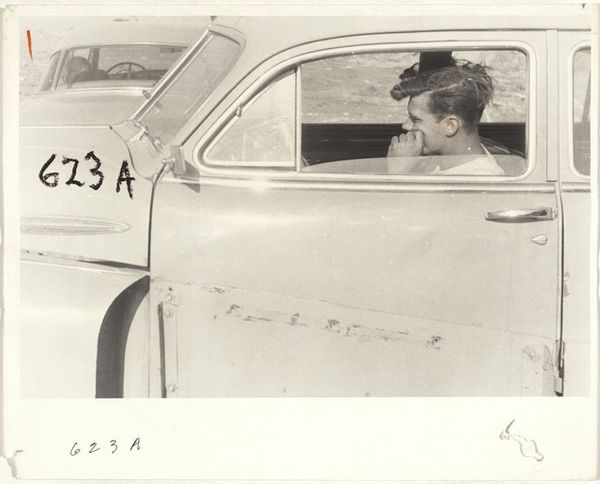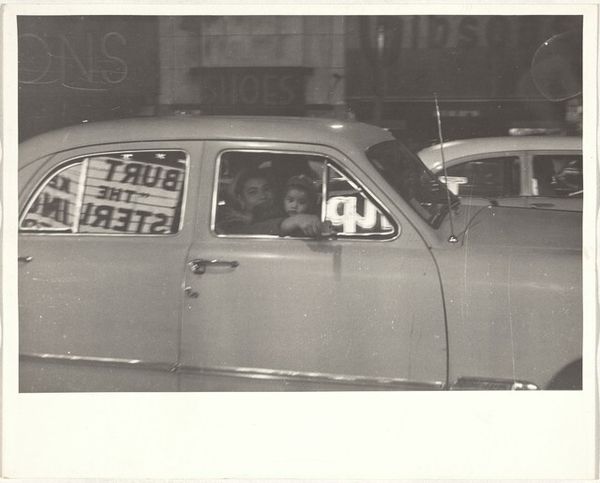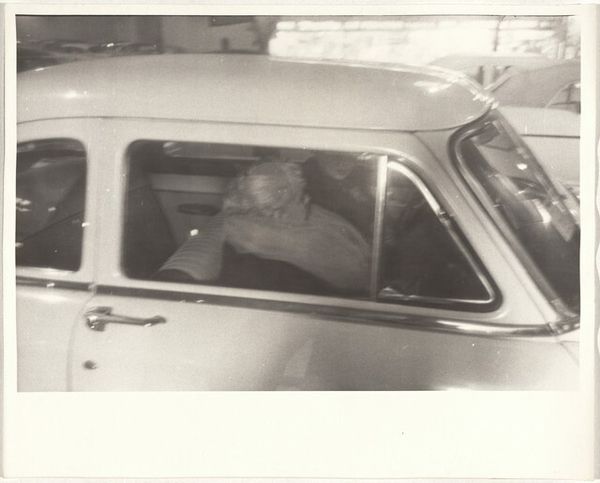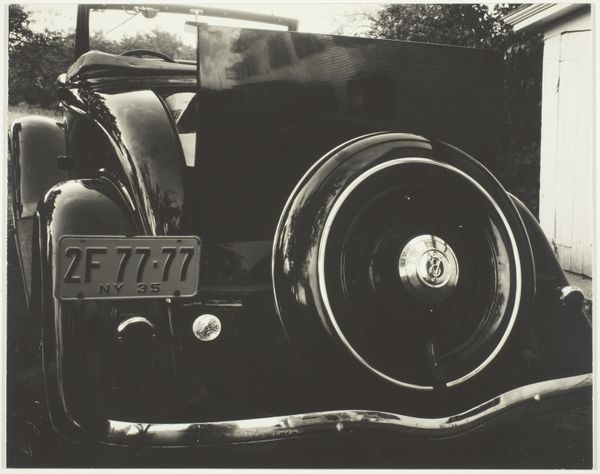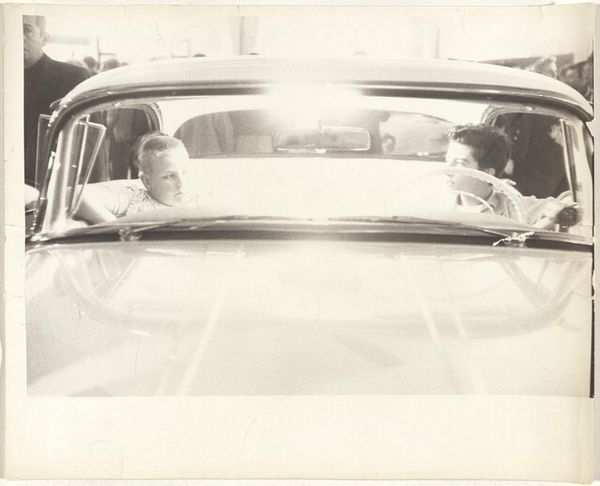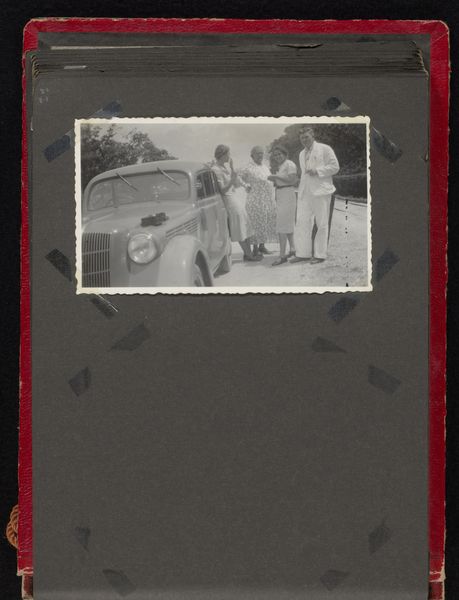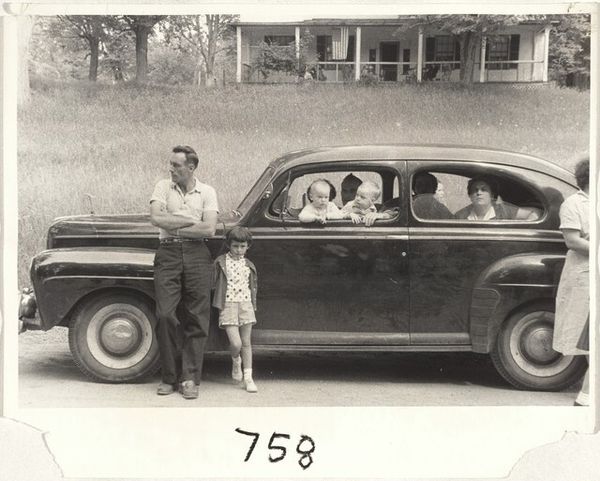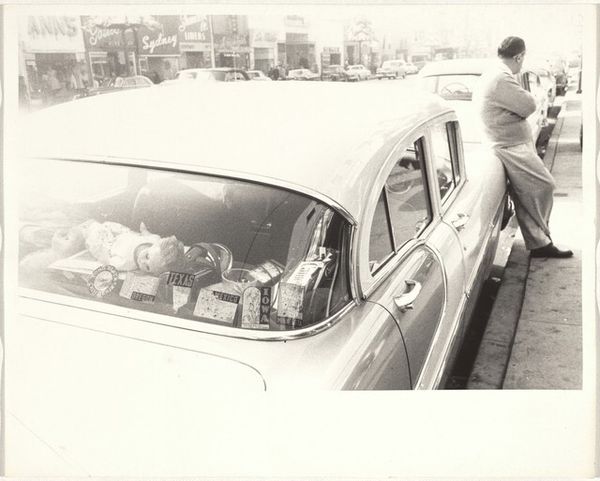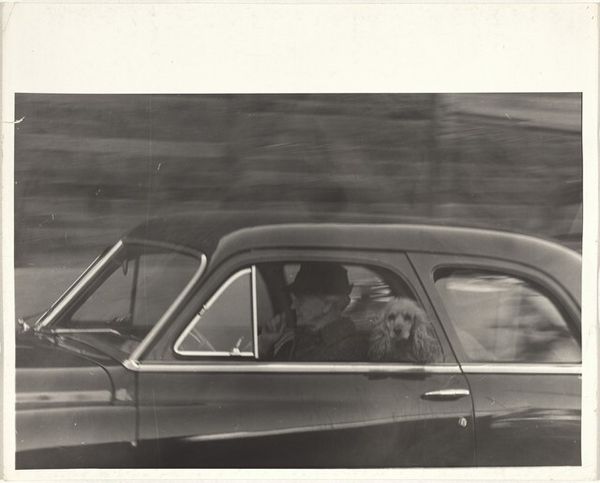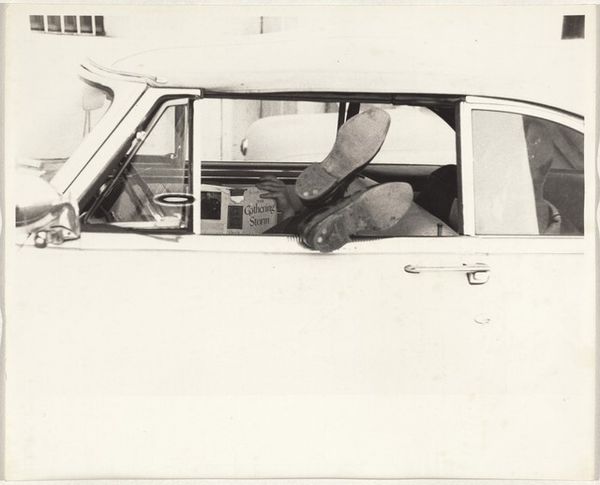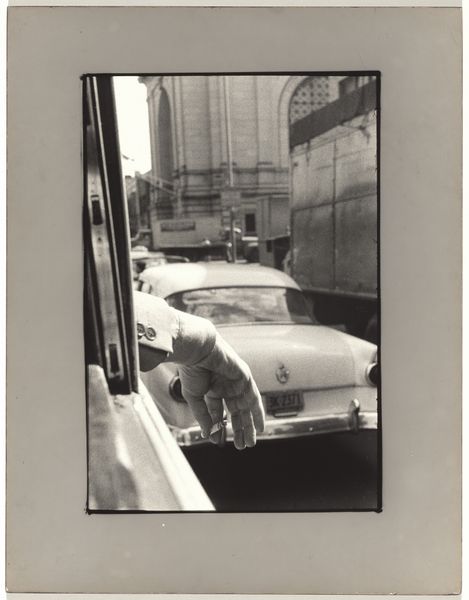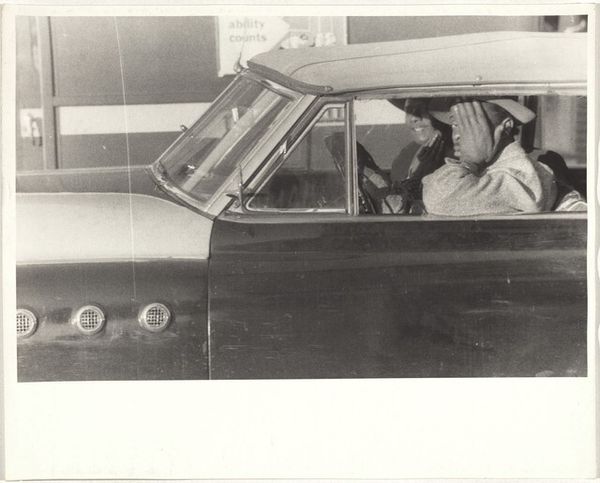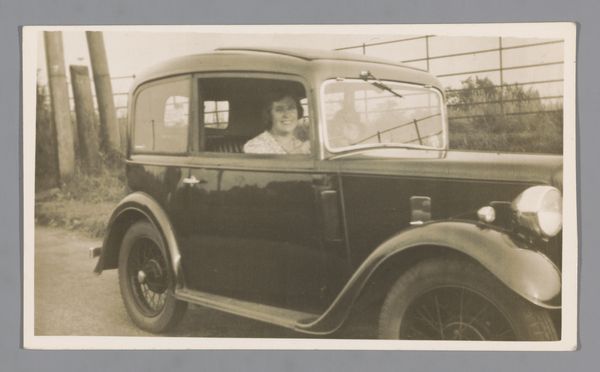
#
wedding photograph
#
photo restoration
# print
#
wedding photography
#
colourisation
#
function photography
#
archive photography
#
historical photography
#
couple photography
#
old-timey
#
celebration photography
Dimensions: sheet: 25.2 x 20.3 cm (9 15/16 x 8 in.)
Copyright: National Gallery of Art: CC0 1.0
Curator: So, here we have Robert Frank’s “Chicago,” a print dating to 1956. What are your immediate thoughts? Editor: Bleak. Absolutely bleak. I'm hit by a wave of post-war anxiety, like the bottom just dropped out of the American dream. It’s a close-up of a car, seemingly innocuous, but look closer... Curator: Exactly. Frank was Swiss, and he traveled across America in the 50s, funded by a Guggenheim grant, capturing these... unconventional glimpses. Instead of the shiny, happy facade, he focused on the cracks, the things others ignored. This isn’t a glamorous ad; it’s reality, or Frank’s interpretation of it. Editor: Those hand-painted signs: "Christ Died for Our Sins," "Christ Came to Save Sinners"—they’re like desperate whispers against the shiny chrome. There’s an undeniable tension between consumerism and religious fervor, almost satirical. Curator: And think about the social context: post-war America, burgeoning consumer culture, yet a deep undercurrent of unease, especially regarding race and class. Frank documented the segregation, the poverty, the disillusionment... all absent in mainstream media of the time. His book "The Americans," which included this photo, was initially panned by critics. Editor: Because it wasn’t pretty! It was honest, brutally so. Look at the dirt on the car, the awkward composition. It feels almost intrusive, like we’re not meant to be seeing this. It doesn’t romanticize anything. It throws it in your face, then dares you to look away. This isn’t picture postcard Chicago! Curator: No, it isn't. It's a challenge to the dominant narrative. Frank was influenced by Walker Evans and the FSA photographers, but he pushed further, injecting his subjective vision. The imperfections are intentional; they're part of the message. It became iconic precisely because of that gritty authenticity. Editor: Yeah, after that first negative response. Art is hard. I'll remember this image: an American car with the heavy freight of human worry stuck to its trunk like unwanted road dust. Curator: A potent piece of social commentary rendered through seemingly simple photography.
Comments
No comments
Be the first to comment and join the conversation on the ultimate creative platform.
